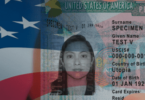Overview
A lawful permanent resident is a foreign national who has been granted the privilege of permanently living and working in the United States. To become a lawful permanent resident based on a family relationship to a citizen of the United States, or to a relative who is a lawful permanent resident, there is a structured multi-step process.
1. Generally speaking the first step in this process is for the USCIS to approve an immigrant visa petition, I-130 Petition for Alien Relative, for the beneficiary seeking permanent residence in the US. This petition is filed by the US relative (petitioner) and must be accompanied by evidence of the family relationship to the beneficiary (non US relative). An exception to this is in the case of a non US Citizen Fiance(e) (of a US Citizen) living outside of the US. In this case an I-129F, Petition for Alien Fiance(e), is filed which will ultimately allow them to enter the US on a K-1 Fiance Visa. Upon entry into the US the K-1 Visa holder will be required to marry their US Citizen Fiance(e) within 90 days and can subsequently file to become a permanent resident (filing a form I-485) while living in the US.
2. After the I-130 has been approved, the Department of State must determine if an immigrant visa number is available to the foreign national (even if they are already residing in the Unites States). When an immigrant visa number is available, it means the US Citizen or Permanent Resident can apply to have an immigrant visa number assigned to the beneficiary (foreign national family member). The time it takes for a visa number to be available is based on a series of processing priorities which factor in many items including the foreign nationals relationship to the US petitioner. The list of priorities can be found at the bottom of this page (Preference Categories).
As a note, the immediate relatives of U.S. citizens, which includes parents, spouses and unmarried children under the age of 21, do not have to wait for an immigrant visa number to become available once the I-130 petition is approved by USCIS. An immigrant visa number will become immediately available and there will be no wait.
3. Once the immigrant visa number has been assigned, the foreign national beneficiary will start the process of becoming a permanent resident. Depending on where the beneficiary resides the procedure is slightly different. If the beneficiary lives in the United States then they may apply to change their status to that of a lawful permanent resident. If they are outside the United States when an immigrant visa number is assigned, they will be required to apply for an “immigrant visa” at the U.S. consulate servicing the area in which they reside. Once the visa is issued they may enter the US and upon clearing the US immigration checkpoint they will immediately become a US permanent resident and receive their green card in the mail.
Eligibility
In order for a US Citizen or Permanent Resident to petition a foreign national relative to immigrate to the Unites States they must meet the following criteria:
The petitioner must be a citizen or lawful permanent resident of the U.S. and be able to provide documentation providing that status.
They must prove that they can financially support their relative (beneficiary) at 125% above the mandated poverty line, by filling out an Affidavit of Support which documents that fact.
The relatives which may be petitioned for as an immigrant vary depending on whether the petitioner is a U.S. Citizen or a lawful permanent resident.
If the petitioner is a U.S. Citizen, they may petition for the following foreign national relatives to immigrate to the U.S:
Husband or wife
Unmarried child under 21 years of age
Unmarried son or daughter over 21
Married son or daughter of any age
Brother or sister, if the petitioner is at least 21 years old, or
Parent, if the petitioner is at least 21 years old.
If the petitioner is a lawful permanent resident, they may petition for the following foreign national relatives to immigrate to the U.S.:
Husband or wife, or
Unmarried son or daughter of any age.
In any case, the petitioner must be able to provide evidence of the relationship.
Preference Categories
People who want to become US immigrants are classified into categories based on a preference system. The immediate relatives of U.S. citizens, which includes parents, spouses and unmarried children under the age of 21, do not have to wait for an immigrant visa number to become available once the visa petition filed for them is approved by USCIS. An immigrant visa number will become immediately available and there will be no wait. The relatives in the remaining categories must wait for an immigrant visa number to become available according to the following preferences (lower preferences have a longer wait).
First preference: Unmarried, adult sons and daughters of U.S. citizens. Adult means 21 years of age or older.
Second Preference: Spouses of lawful permanent residents, their unmarried children (under twenty-one), and the unmarried sons and daughters of lawful permanent residents.
Third Preference: Married sons and daughters of U.S. Citizens.
Fourth Preference: Brothers and sisters of adult U.S. Citizens.
Once USCIS receives the visa petition (Form I-130, Petition for Alien Relative), it will be approved or denied. USCIS notifies the person who filed the visa petition of the petition was approved. USCIS will then send the approved visa petition to the Department of State’s National Visa Center, where it will remain until an immigrant visa number is available. The Center will notify the foreign national when the visa petition is received and again when an immigrant visa number is available. You do not need to contact the National Visa Center, unless you change your address or there is a change in your personal situation, or that of the petitioner, that may affect eligibility for an immigrant visa, such as reaching age 21, marriage, divorce, or death of a spouse.
Source: Visas Journey









